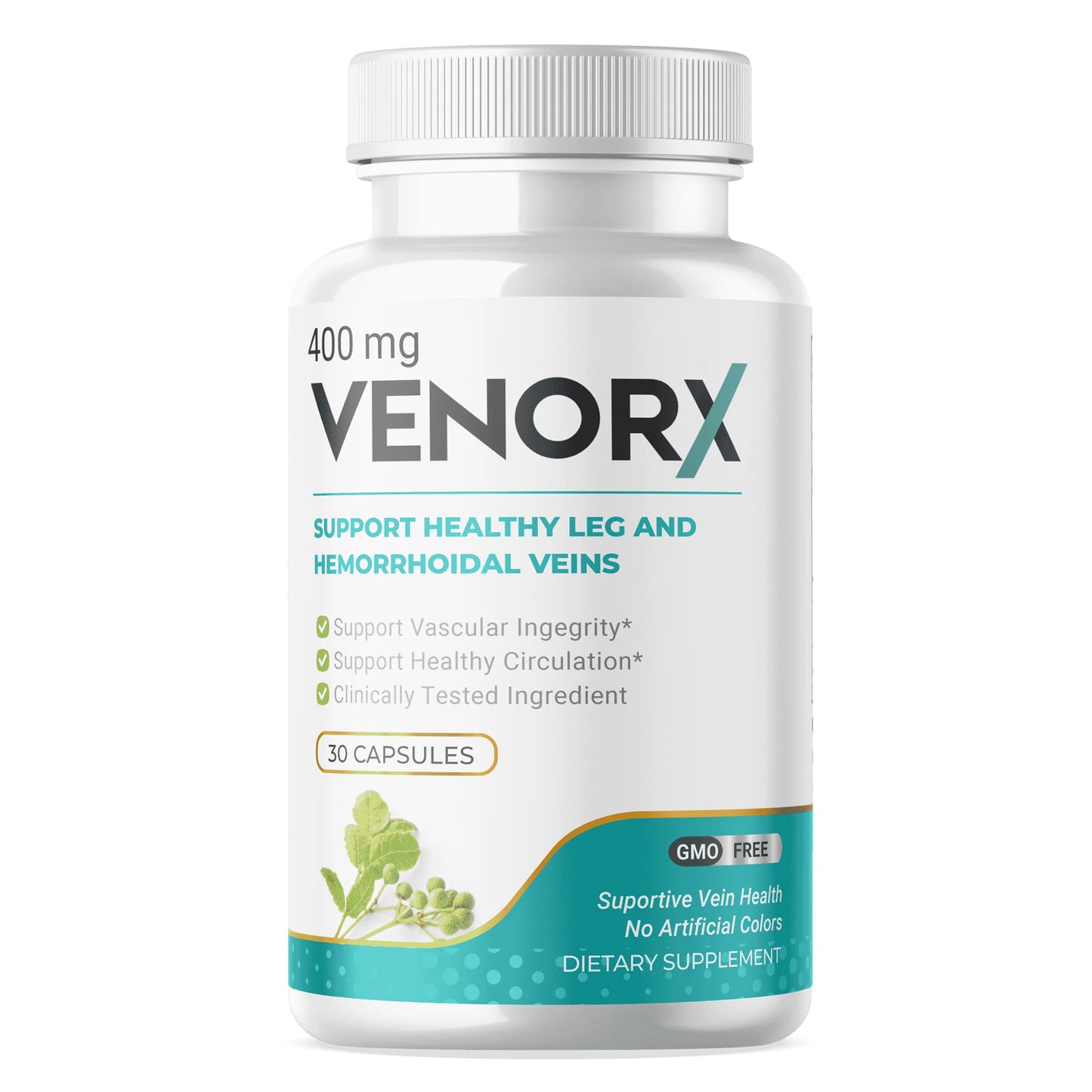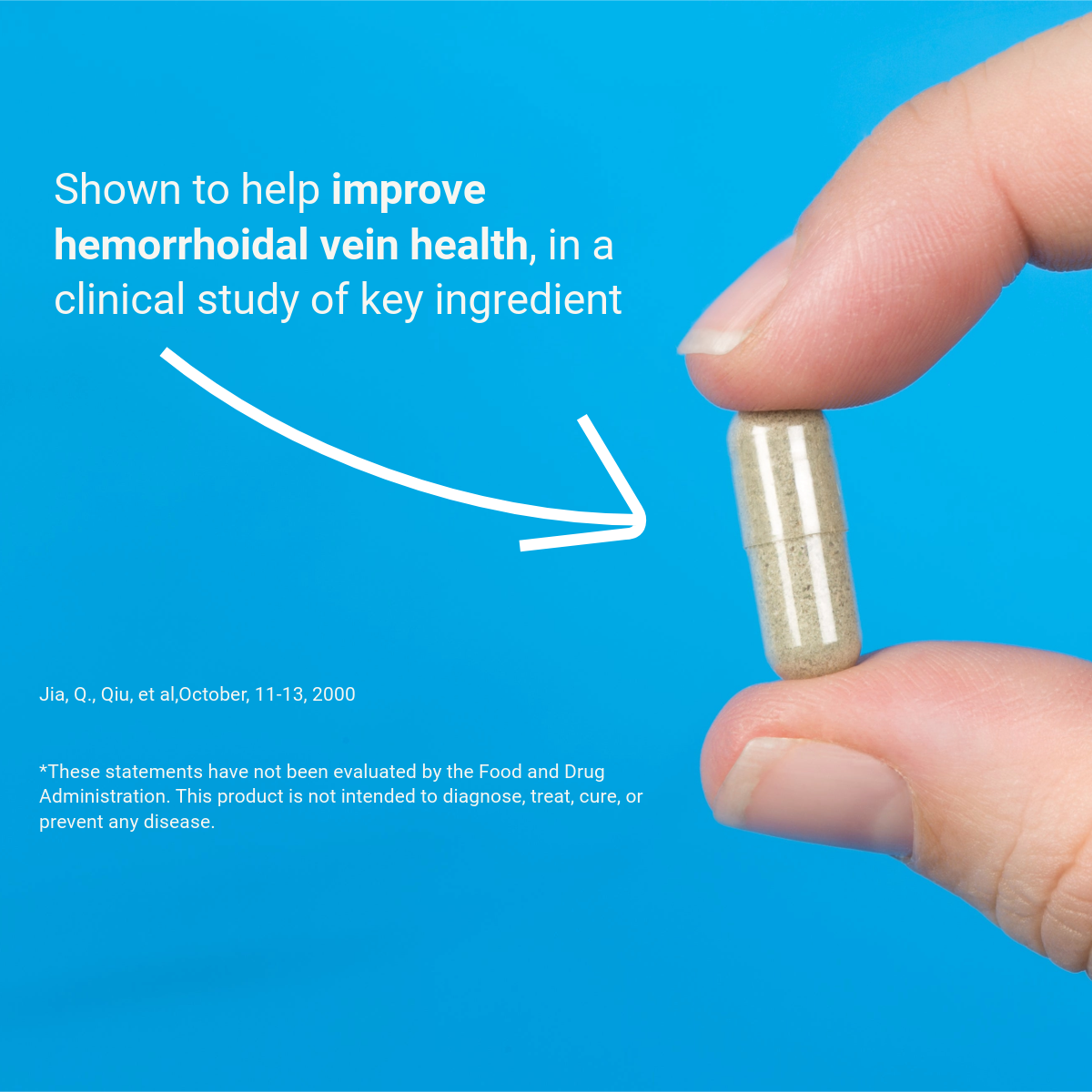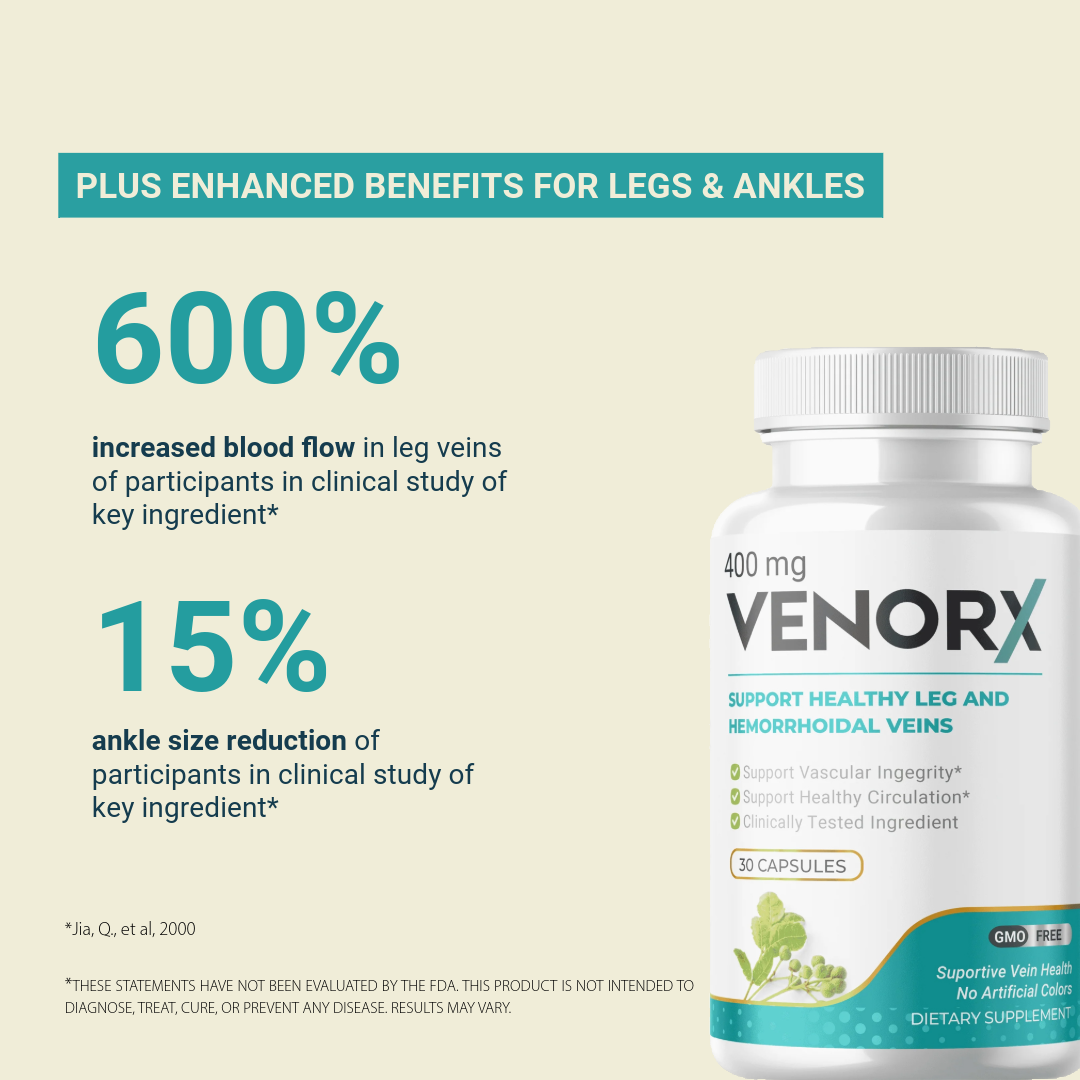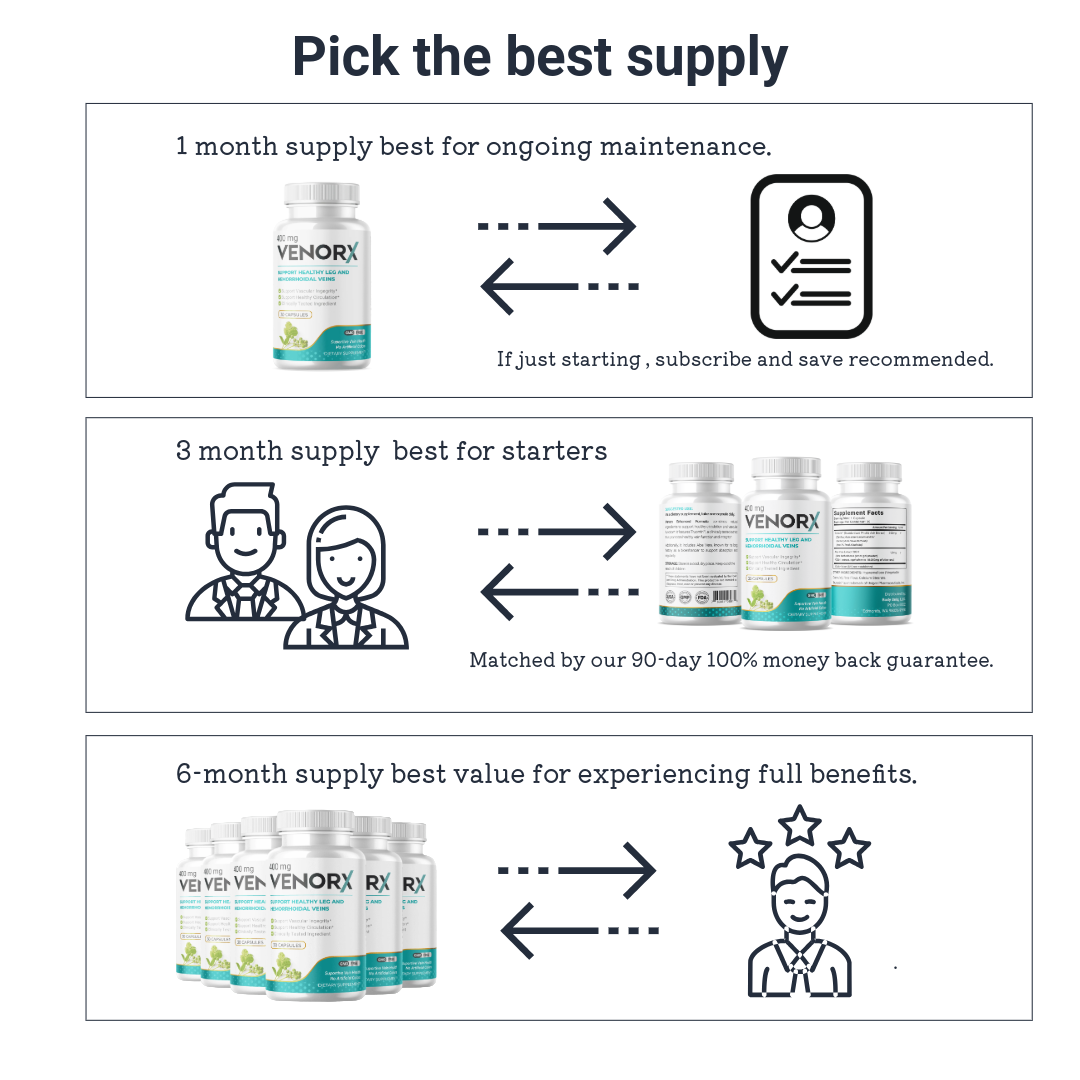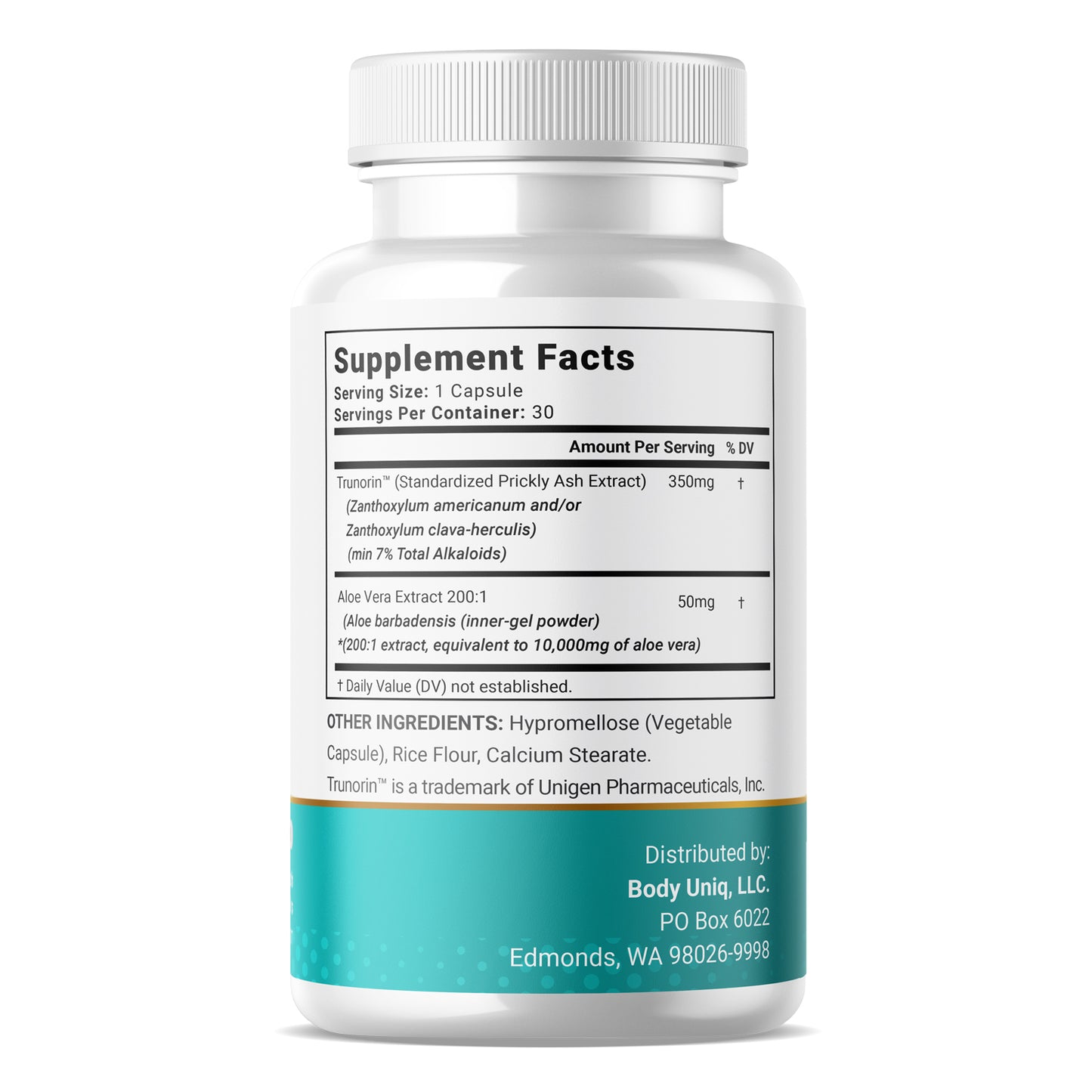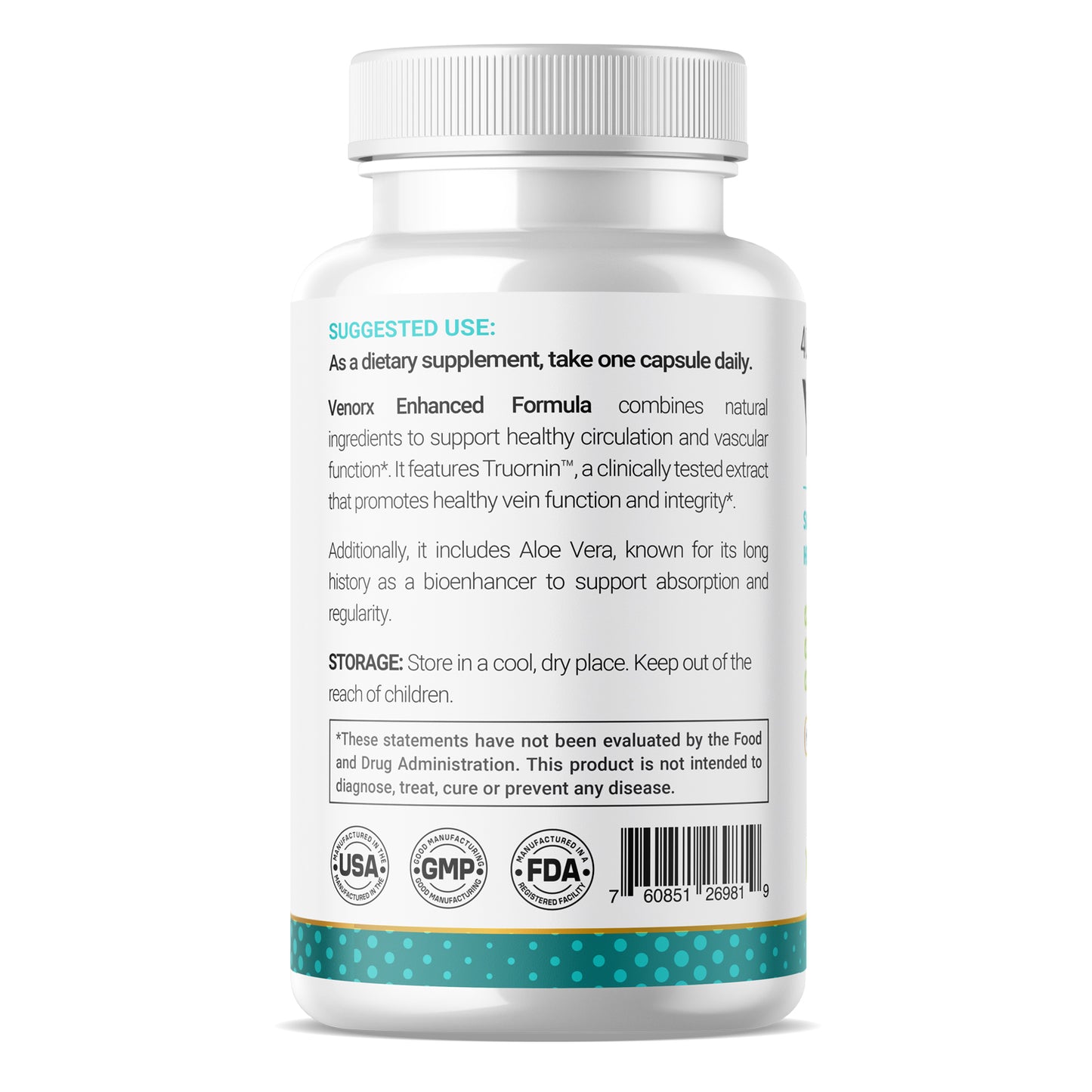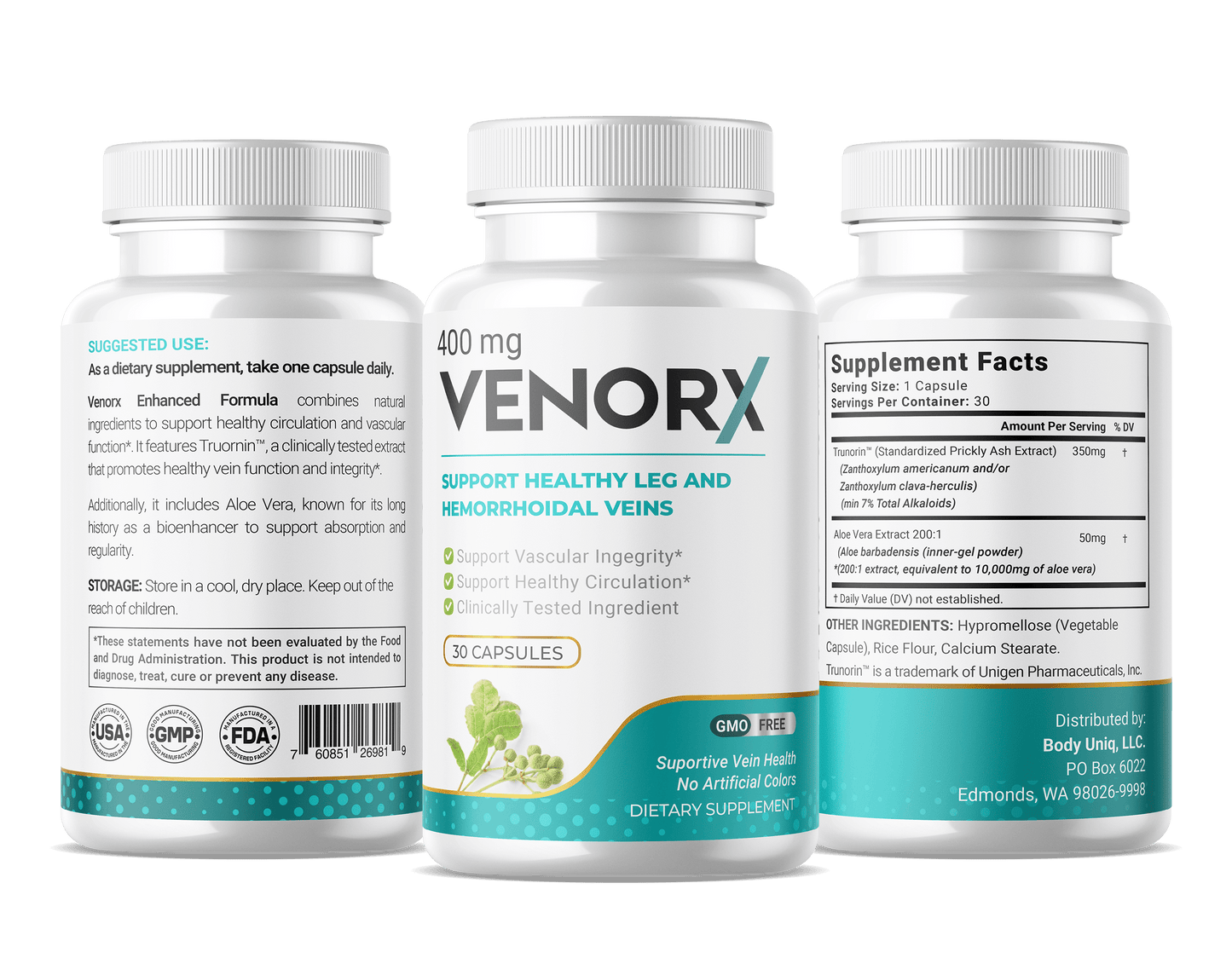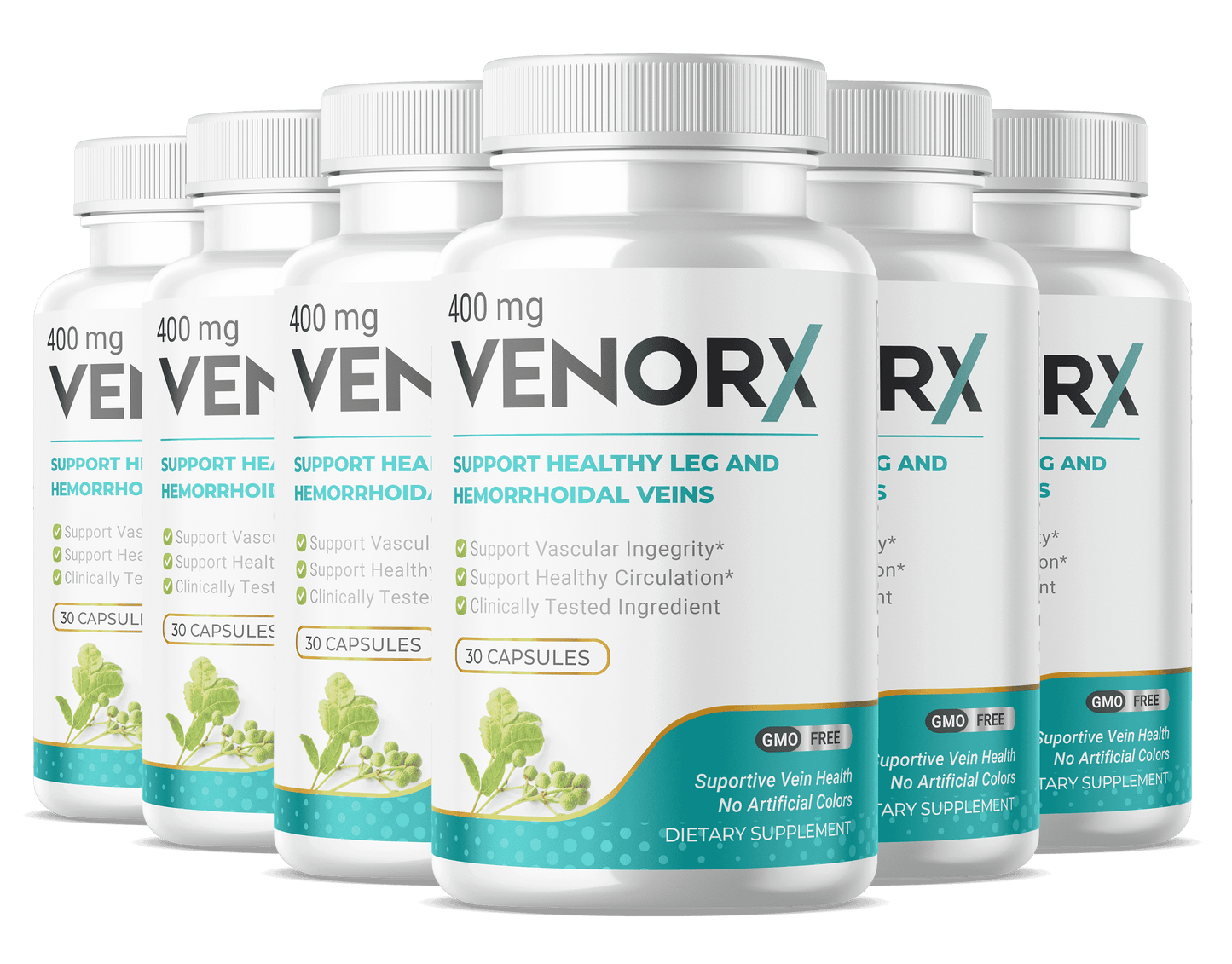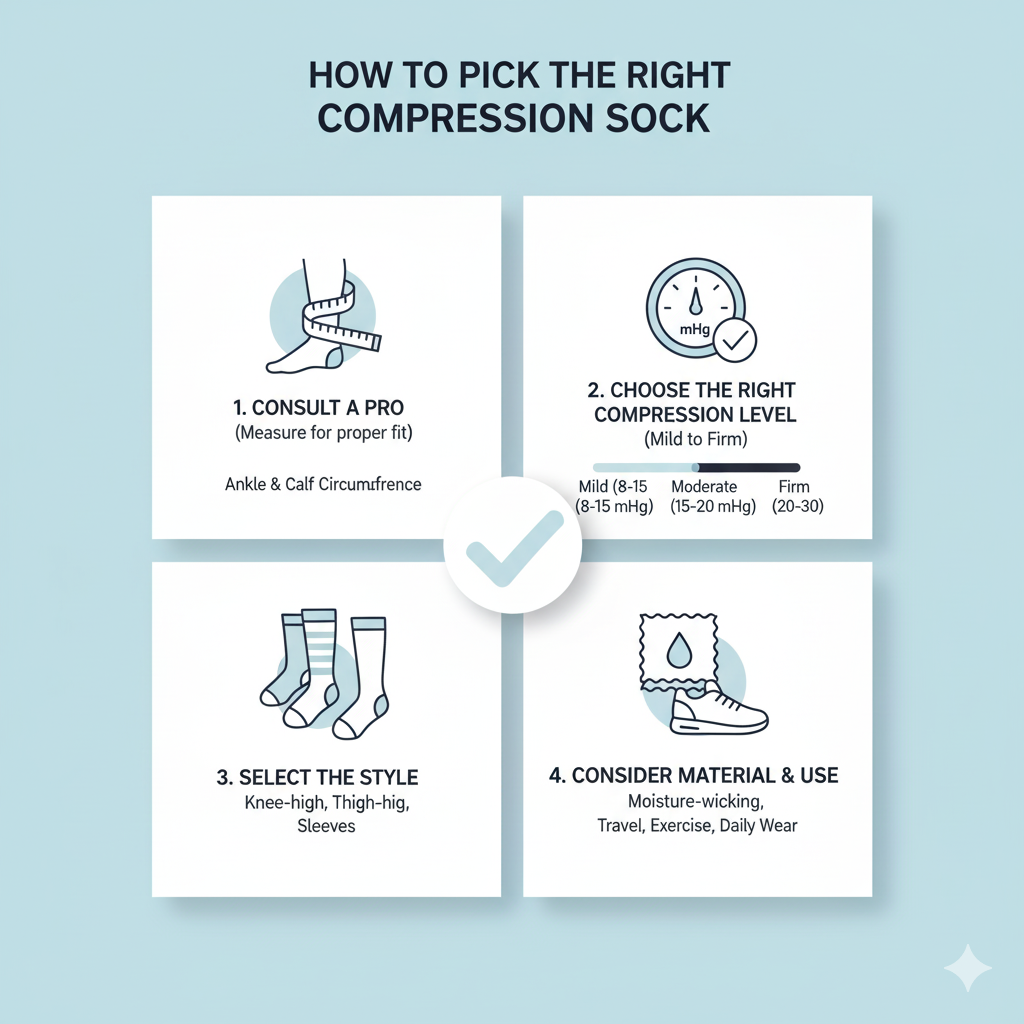
How to Pick the Right Compression Socks: A Guide to External & Internal Circulatory Support
Share
The Ultimate Guide to Picking the Right Compression Socks
And Exploring a Dietary Supplement for Circulatory Wellness
If you experience heavy, tired, or achy legs, you’ve likely heard about compression socks. They are a cornerstone of venous support, but walking into a store or shopping online can be overwhelming. With so many levels, sizes, and styles, how do you choose?
This guide will demystify the process, walking you through every step to find the perfect pair for your needs. We will also explore how a holistic approach to wellness often yields the best results, which can include lifestyle changes and dietary supplements like Venorx, which contains a patented Prickly Ash extract clinically studied for its properties in supporting healthy circulation.**
Why Compression Socks Work: The Science of Support
Compression socks are not just fancy hosiery; they are engineered medical devices. They work by applying graduated pressure to your legs—tightest at the ankle and gradually decreasing up the calf or thigh. This external pressure helps your circulatory system in two key ways:
- Supporting Vein and Valve Function: The pressure helps the walls of your veins and the one-way valves inside them work more efficiently, reducing the backward flow of blood (reflux) and pooling.
- Enhancing Blood Flow: By narrowing the diameter of the veins, the pressure increases the velocity of blood returning to the heart, supporting overall circulation.
This mechanical support can lead to a significant reduction in symptoms like swelling, aching, and fatigue.
Step 1: Find Your Compression Level (The Most Important Decision)
Compression is measured in millimeters of mercury (mmHg), the same unit used to measure blood pressure. The level you need depends on your wellness goals and any specific conditions. Always consult with your healthcare provider before starting to use compression therapy, especially at higher levels.
| Compression Level (mmHg) | Best For | Common Use Cases |
|---|---|---|
| 8-15 mmHg (Mild) | General wellness, minor leg fatigue, slight swelling | Long days at work or travel, pregnancy, mild achiness |
| 15-20 mmHg (Moderate) | Moderate symptoms, varicose veins, more significant swelling | Those who stand or sit all day, post-surgery recovery, managing venous symptoms |
| 20-30 mmHg (Firm) | More pronounced venous insufficiency, significant edema, after sclerotherapy | Medical management of venous conditions, under a doctor's guidance |
| 30-40 mmHg (Extra Firm) | Severe conditions like lymphedema, deep vein thrombosis (DVT) management | Strictly for medical use, always prescribed by a physician |
Pro Tip: If you're new to compression, start with a mild or moderate level (8-15 or 15-20 mmHg) to allow your body to adapt. They should feel snug and supportive, not painfully tight.
Step 2: Get the Perfect Fit (Size Matters!)
Ill-fitting compression socks are ineffective and can even be harmful. Too tight, and they can cut off circulation; too loose, and they provide no benefit. Never guess your size.
How to Measure: Do this in the morning when your legs are at their least swollen.
- Ankle Circumference: Measure around the narrowest part of your ankle, just above the ankle bone.
- Calf Circumference: Measure around the widest part of your calf.
- Leg Length (for knee-highs): Measure from the floor behind your heel to the bend of your knee.
Use the manufacturer’s sizing chart—they can vary between brands.
Step 3: Choose Your Style and Material
Compression wear comes in various forms to suit your needs and preferences:
- Knee-High: The most common style, ideal for targeting calf and ankle issues.
- Thigh-High / Pantyhose: Better for symptoms that extend into the thighs or for those who need full-leg support.
- Open-Toe: Offers more flexibility for toe movement and can be cooler in warm weather.
Materials range from basic nylon to moisture-wicking, breathable fabrics like bamboo or copper-infused fibers. Choose a material based on your activity level and climate.
The Limitations of Compression Socks and a Holistic Approach
While compression socks are an excellent tool for providing external support, they do not address the internal, cellular aspects of vascular health. Furthermore, some people find them uncomfortable to wear all day, especially in warmer climates.
A truly comprehensive approach to circulatory wellness involves multiple strategies:
- External Support: Compression socks, leg elevation, exercise.
- Internal Support: A healthy diet, proper hydration, and potentially, dietary supplements designed to support vascular function from within.
Venorx: Supporting Circulatory Wellness from Within
For those looking to complement external support with internal wellness, dietary supplements can be a part of the conversation. Venorx is a dietary supplement formulated with a specific goal: to support the health of the vascular system.
Its key ingredient is a patented, clinically studied extract derived from Prickly Ash (Zanthoxylum species). Traditional systems of wellness have long used Prickly Ash for its warming and stimulating properties. Modern science has taken this a step further, creating a standardized extract that is the subject of clinical research.
How the Patented Prickly Ash Extract in Venorx Works to Support Wellness
This specific Prickly Ash extract is not simply a ground-up herb. It is a specialized formulation that has been studied for its potential to support microcirculation—the blood flow through the body's smallest blood vessels, the capillaries. Here’s how it is believed to function:
- Supporting Healthy Blood Flow: The extract is studied for its properties that may support the dilation of capillaries, thereby promoting healthy circulation at the microvascular level.
- Providing Antioxidant Support: It contains compounds that act as antioxidants, helping to protect cells from damage caused by free radicals, which can be a factor in overall vascular health.
- Promoting Venous Tone: Some research suggests it may help support the tone and integrity of veins, which is crucial for efficient blood return to the heart.
Think of it this way: if compression socks provide the external "scaffolding" for your veins, a supplement like Venorx is designed to nutritionally support the health of the "building materials" themselves.
Key Takeaway: Venorx is intended to be a complementary part of a healthy lifestyle, not a replacement for medical treatments or compression therapy when prescribed by a doctor. It represents an internal approach to circulatory wellness.
Compression Socks vs. Venorx: A Comparative View
These two approaches work in different ways and are not mutually exclusive. Many people find that using both provides the most comprehensive support.
| Feature | Compression Socks | Venorx Dietary Supplement |
|---|---|---|
| Primary Action | External, mechanical support | Internal, nutritional support for circulation |
| How it Works | Applies graduated pressure to assist blood flow upward | Provides a patented Prickly Ash extract studied for supporting microcirculation |
| Usage | Worn on the legs during the day | Taken orally as a daily capsule |
| Best For | Immediate symptom relief (heaviness, swelling) during activity | Long-term, foundational support for vascular wellness |
| Ideal Combination | Wear compression socks for targeted support during long flights or workdays, and take Venorx daily to support overall circulatory health from within. | |
Creating Your Personalized Wellness Plan
The best strategy for leg health is a holistic one. Here’s how you can integrate these tools:
- Consult Your Doctor: Discuss your symptoms and goals. They can help you determine the right compression level and advise if a supplement like Venorx is appropriate for you.
- Invest in Proper Compression Socks: Use the guide above to select the right pair. Wear them consistently during times of prolonged sitting or standing.
- Consider Internal Support: If you are looking for a daily internal supplement to support your circulatory system, learn more about Venorx and discuss it with your healthcare provider.
- Adopt Healthy Habits: Regular exercise (especially walking), maintaining a healthy weight, staying hydrated, and elevating your legs are foundational to good circulation.
By understanding your options—from the external support of well-fitted compression socks to the internal wellness approach of a clinically studied dietary supplement—you can take proactive steps toward feeling your best.


